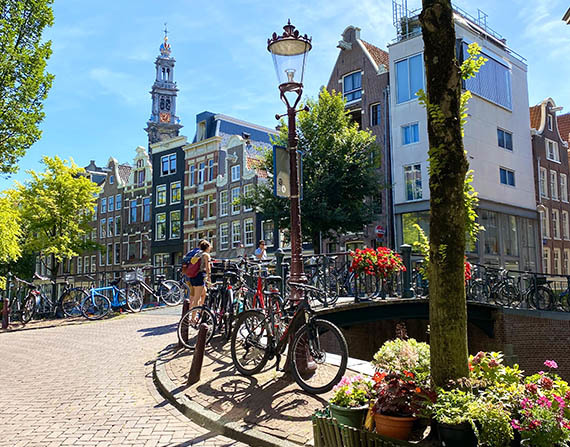Vienna: all the splendor of a former imperial city
Vienna is a city that sets the standard for elegance, prosperity and wealth. Given its aristocratic heritage, a hint of rigor can also be felt once you are breathing the Viennese atmosphere. For almost four centuries (1558 - 1918) Vienna was an imperial city, being the capital of the opulent Habsburg Empire, whose reign encompassed not only Austria and Hungary but also Slovakia, Slovenia, Bohemia, Croatia, parts of Poland and Romania along with some of Italy. This terrific melting pot of cultures has prevailed until these days in so many of the country's facets, including its gastronomic scene.
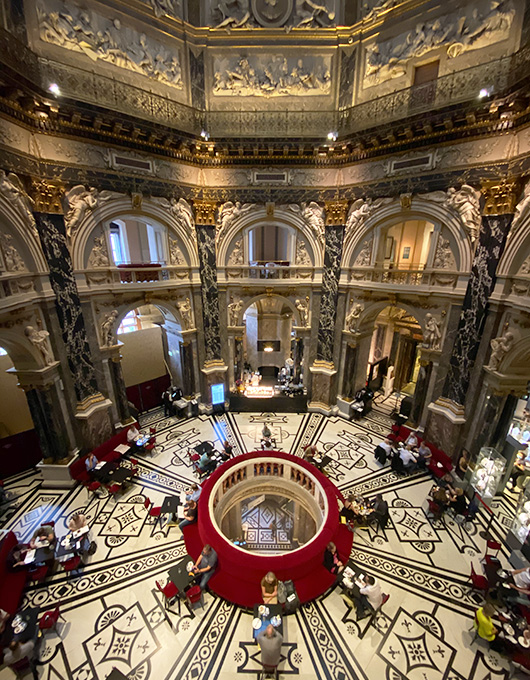
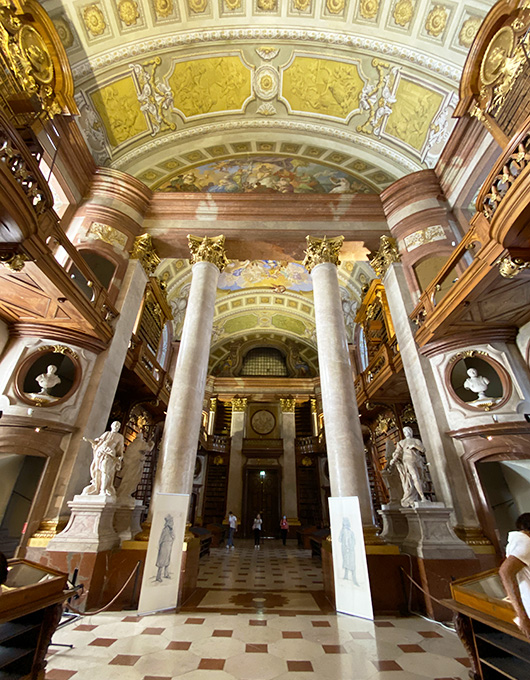
Before delighting yourselves within Vienna's exciting cuisine (for which I won't spare any details), let me just point out a fact that I find extremely worthwhile mentioning to understand a little bit of Vienna's character: the city's astute ability to maintain richness and glory even after the misfortune caused by traumatic events. The First World War, for instance, had shrunk Vienna's status of imperial capital to a tiny new country, when the Habsburg family collapsed.
After a few decades, the Second World War then saw the emergence of the Nazi-regime. Although bombing didn't destroy Vienna as much as some other capitals, it had left an obscure veil behind which the population hid with shame, guilt and sufferance. Both events, I believe, helped make Vienna rise from the ashes and retrieve its affluence.
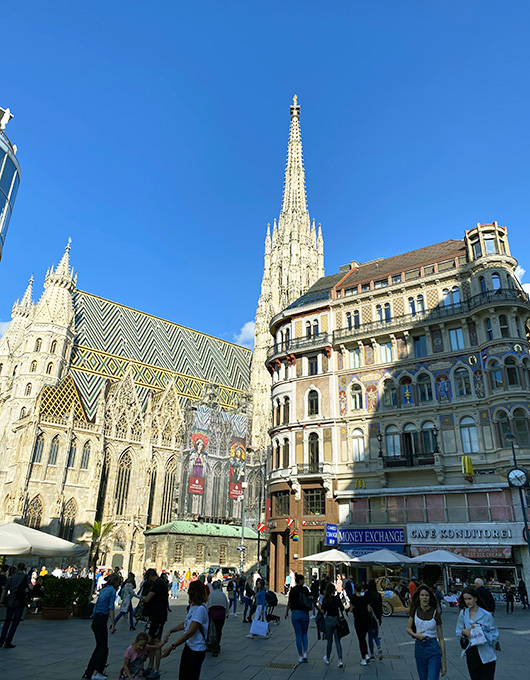
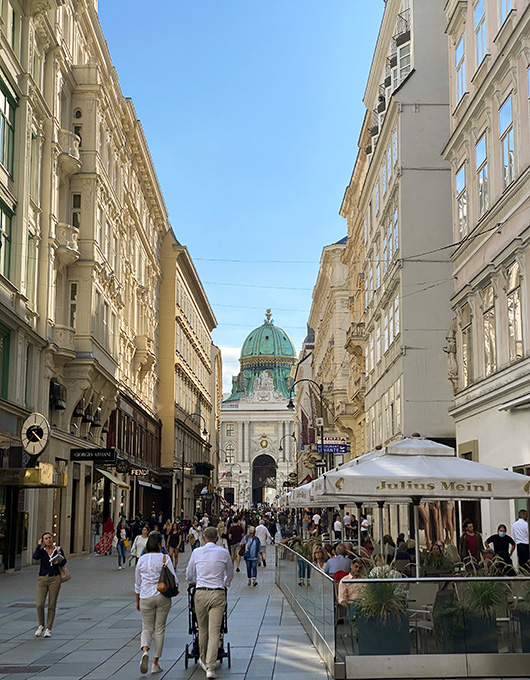
Culture and Art
It is no wonder why some of the greatest and creative artists of all times were born and acclaimed there: the painter Gustav Klimt; the architect Otto Wagner; the designer Koloman Moser; the composer Franz Schubert, just to name a few. The father of psychoanalysis, Sigmund Freud, although being born in the Czech Republic (part of the former Austrian Empire), emigrated to Vienna with his family in search of better opportunities, just like so many had done.
By the way: the apartments in which he lived and worked for almost 50 years have just been re-opened after an extensive renovation (September 2020). Additionally, the Sigmund Freud Museum has doubled in size as it welcomes visitors, for the first time, to all rooms some of which, until recently, were kept in secret. It's quite something to be able to see, in its entirety, where the first psychoanalysis practices took place.
With so much artistic wealth, the city of Vienna radiates culture and knowledge. Museums, libraries, churches, operas, palaces, galleries, gardens: no one can ever deny the splendor of the influence and legacy left by the Habsburgs. It's literally everywhere. As most of Vienna's monumental buildings were built during a time of a predominant style of architecture, prepare yourself to see a spectacle of Baroque art all around the city.
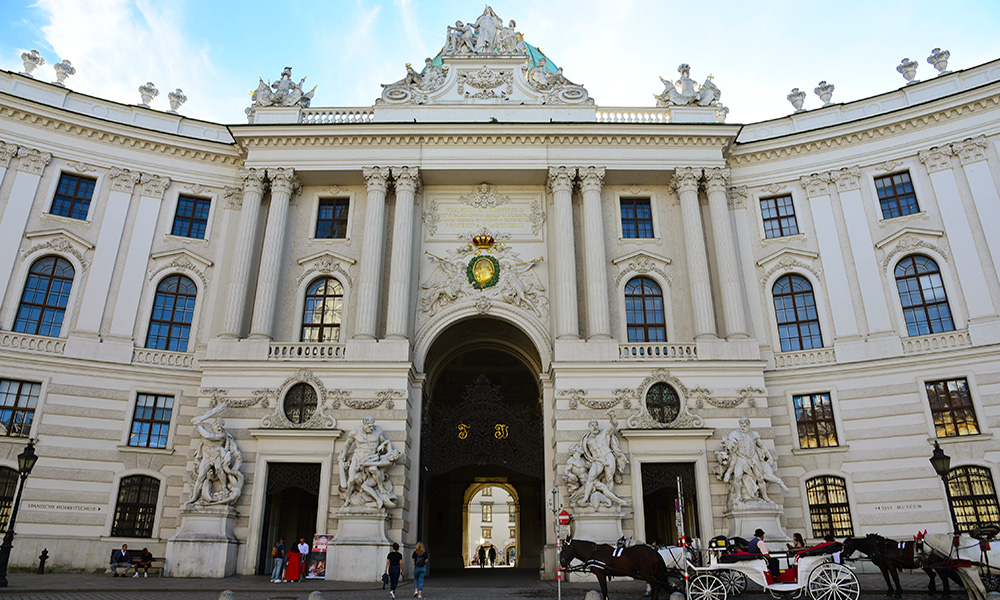
Here's a list of Vienna museums and palaces I loved visiting (some of them more than once) that I consider unmissable:
There's no visit to Vienna without exploring - for a few hours, I must say - this complex, which was home to one of the most lavish imperial families the world has ever seen. For more than 600 years the Habsburgs lived in this giant palace formed with more than two thousand rooms, including museums, a church, a library, a Spanish Riding School and more. I love everything about it especially Sisi's rooms where we gain a glimpse into see the intimate life of this beloved Empress as well as her obsession with beauty, her deep sadness and audacious rebellion against court ceremonies.
The interior will take your breath away: the entrance hall, staircase and cupola hall immediately provoke an impressive effect and sets the scene for what we can expect going inside further. The entrance hall is already magnificent in its own right and incites visitors to stop by for a drink at the elegant café. Ascending the stairs, the show continues when we see Gustav Klimt's oeuvre d'art throughout the walls (for a while he was the Court painter and was many times commissioned by the emperors). Originally the Kunsthistorisches Museum was built near the Hofburg Palace to house the extensive collections of the Habsburg family and it's a well-known fact that money was not spared! As a result, we can see wonderful works from Ancient Egypt to the late 18th century - remarkable works from foreign artists such as Johannes Vermeer, Pieter Bruegel and Ticiano Vecellio are amongst the most prominent ones showcased there.
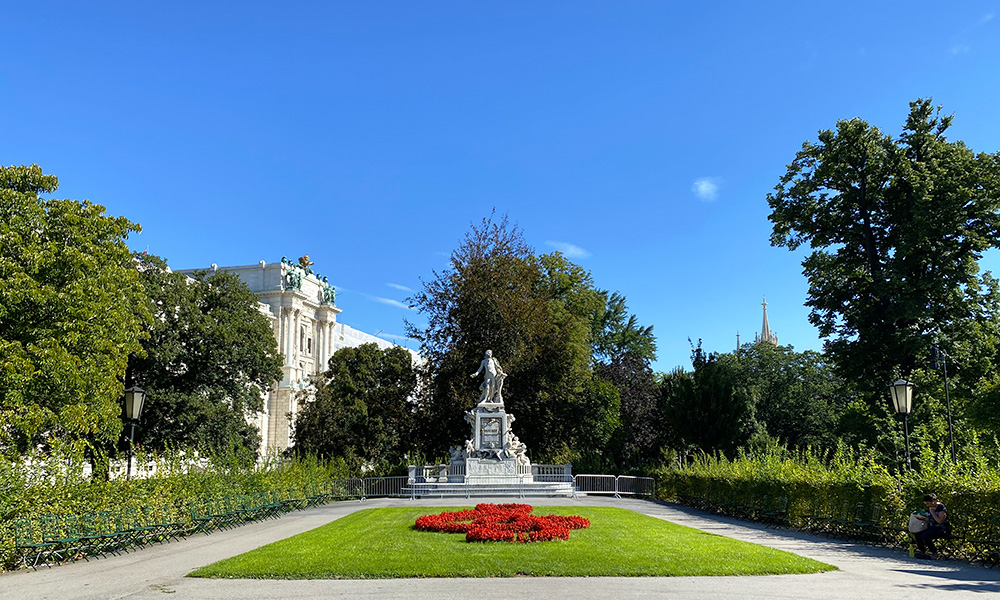
This is one of the most important museums in Austria and considered to be one of Vienna's architectural jewels, housed in a complex of baroque buildings and gorgeous (French-style) gardens (it's also where the former Prince Eugene of Savoy spent the delightful Austrian summertime). The Belvedere showcases an impressive collection of sculptures and paintings by Austrian masters such as Gustav Klimt (his most extensive collection is based there, including the famous "The Kiss"), Egon Schiele, Oskar Kokoscha, Ferdinand Georg Waldmüller, along with international artists such as Edward Munch, Renoir, Manet, Monet, Van Gogh. P.S. don't forget to spare some time to contemplate the section dedicated to "Viennese Secession" - an inherent part of Vienna's art heritage.
For decades this served as the summer residence of the Habsburg emperors. Can you imagine the grandeur of this place? You will, once you stare at this terrific baroque symbol of power and influence of the House of Habsburg. The palace and gardens mingle as though they were an inseparable part of each other. If the exterior impresses you, wait to see the the lavish rooms (more than a thousand). They are majestic! However, my favorite part is the Gloriette: an outside pavilion of the main palace's building which was originally used as a breakfast room and dining hall by the emperor and his entourage. I can't describe the magnificence of this venue's view. Schönbrunn is part of UNESCO's world heritage since 1996.
One could never understand how wonderful this place is until visiting it. I'm sure you've never seen anything like this library before. It's the biggest Baroque one in Europe. During the imperial era, it served as the Court Library as a private wing of the Hofburg residence. The interior dome is magnificently decorated with frescos by the court painter Daniel Gran. Former Prince Eugene of Savoy had a personal collection of 200,000 volumes that until today can be found there. The National Library holds frequent and very interesting temporary exhibitions that crown off the marvelous experience.
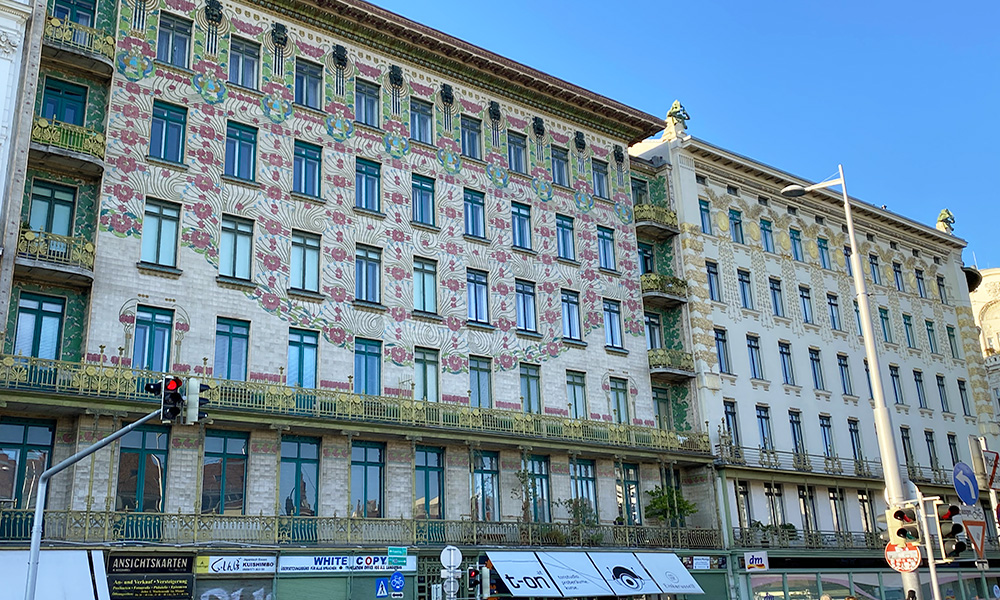
Majolikahaus of Otto Wagner
Although it is a private building and not open to the general public (unless you live or have a good friend in there), don't miss the chance to captivate your eyes only by staring its façade: it is probably one of the most remarkable examples of the Art Nouveau style in the world. The floral shape ceramic tiles, known as Majolica, played a functional role according to Wagner's new modern architectural philosophy: weather-resistant and easy to clean. Because of his work and many others from different artists, the city's history could witness a revolutionary spirit of enlightenment, also referred as the "Viennese Secession".
This fascinating cultural institution houses the biggest collection of modern and contemporary Austrian art. It's curatorship also grants visitors the perfect opportunity to understand the transition from Art Nouveau to Expressionism (including the most important collection of works of Egon Schiele). It is also a great chance to admire Otto Wagner's. P.S. in September 2020, the Leopold Museum's rooftop has become the MQ Libelle, which is a multifunctional space to contemplate the city from above as well. One can enjoy this with a delightful Aperitivo at sunset (free of charge, by the way).
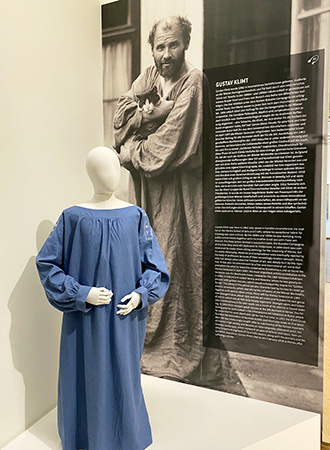
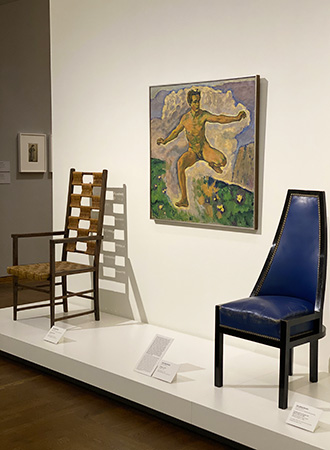
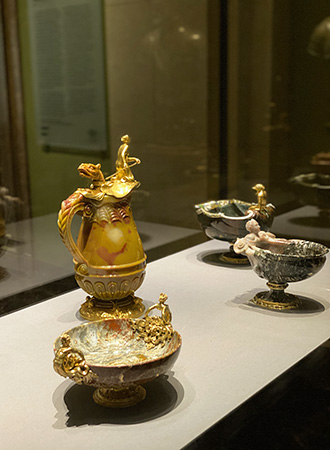
Cake culture
There's no perfect place to indulge yourself in pastries more than Vienna (some might disagree as France's tradition of patisserie is so famous and enticing, but it doesn't compare to the appealing and unique atmosphere one can find inside the Viennese cafés).
The experience is not just about eating the most delicious cakes and pies. It has mainly to do with the history of these cafés and how they have been engaging the clientele for centuries.
These cafés have been "places to see and to be seen" for centuries. Landtmann Café, for instance, was Freud's favorite, where he would play chess and cool down his mind during his free time (in between his psychoanalysis practices): once you go there, order the chocolate pie with hazelnut and praline. It's lush! As good as Landtmann Café are also these ones that I can recommend: Café Museum, Café Sperl, Café Pruckel and Café Eiles. Charming, historic and vibrant places where you can get amongst locals and the like.
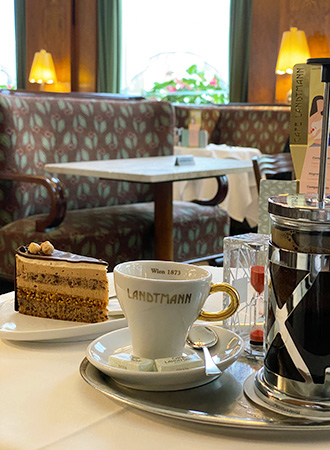
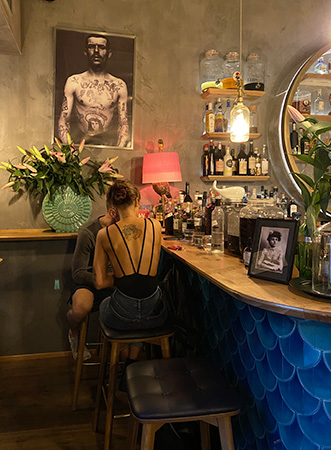
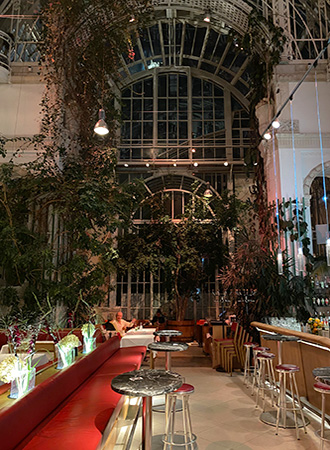
Where to eat in Vienna
The whole of Austria is broadly well known for dishes with meat: wiener schnitzel, potato goulash (made with sausage), tafelspitz, rindsuppe (soups also play a starring role) and many more. Veal and beef are some of its cuisine protagonists along with Vienna sausage recipes. Most of them are inherited from different cultures who once emerged during the Austro-Hungarian dynasty, hence it's a fusion of influences from Central Europe.
On top of this, desserts are something which Austrian cuisine is famous for. When craving for something sweet, you don't have to think that much. Not only because of the many aforementioned cafés but also because all Vienna restaurants offer an enticing menu for those who have a sweet tooth. Here are my favorite ones:
Here's my favorite ones:
It has been a Viennese institution since 1618. Half bar, half restaurant, it is probably THE hottest spot in town where politicians, jet setters, artists and visitors from all ages mingle and dispute sitting on the outside tables. And it's been like that for centuries, part of Vienna's culture, a timeless venue where the whole concept - food, atmosphere, service - finds the right tone. Food, by the way, is delicious and it caters to all tastes. However, what most catches the clientele's attention are the open sandwiches displayed inside a glass case and served for decades by the same lady with eccentric glasses: she keeps the recipes a secret. Did I mention about the beautiful Art Nouveau ambiance of this place? Oh yes, that's another highlight!
What a great time I had there. The idea behind its creative and delicious cuisine is to offer the comfort and flavors of homemade kitchen. Both drinks and food are prepared with ingredients either cultivated by the owners in their own gardens or selected by themselves from local producers. From beer to liquors, from fermented foods to sausages and cheese: everything is carefully produced and prepared by a few hands only (this might sound odd, but it's true: I have eaten the best tomato of my life at this place). The living room atmosphere where clients eat and drink also feeds them with humor and charm. The owners, Hubert & Lucas, by the way, are extremely friendly and kind. They told me their motto which I find extremely appropriate: "rather intoxicating today - fluffy again tomorrow anyway".
It was hard to believe that one of the few vegetarian Michelin-starred restaurants is based in Vienna. More precisely, there are only nine vegetarian restaurants in the whole world awarded with this most coveted of prizes and one of them is located in Austria's capital. Chef Paul Ivic's cuisine is out of this world! Don't waste any time: make yourself a reservation. I guarantee it will be one of the most unforgettable gastronomic experiences of your life. And if you consider yourself as a big meat lover, you'll change your mind into a whole different perception about food made with vegetables.
I can't deny that I love going to this place more because of its ambiance than its cuisine. This is another example of how the imperial time has left its imprint all over the city. It was formerly a greenhouse built in 1822 from where the imperial family and guests would overlook the Hofburg Palace gardens. Now, guests seat surrounded by exotic nature and huge tropical palms: it's quite exquisite! Palmenhaus is also an excellent spot for a late-evening glass of wine.
This bar is an example of how the cocktail industry in Vienna has been evolving over the last few years. Although Vienna is a small city when compared to cosmopolitan capitals such as New York, London, Tokyo and São Paulo, the Viennese bar scene can prove to be extremely innovative and alluring just like any other capital in the world. It has such a cool, funny and light atmosphere and drinks are prepared with mastery. Very good food as well.
Café & Restaurant Motto am Fluss
This place has such a stylish personality and I like everything about it. First, the gorgeous view over the banks of the Danube Canal. The interior design, also, is curated beautifully with Viennese modern furniture from the 1950's. Last but not least, the delicious menu is created with international and organic regional dishes as well as local wines (it was in 2017, at this very same restaurant, where I tried Austrian wine for the first time and which since then has become one of my favorites). Another great attribute is its all-day cuisine: from breakfast to late night dinner. By the way: the building looks like a boat which is not a coincidence as it serves as the docking station for ships' passengers who come and stop by along the Danube.
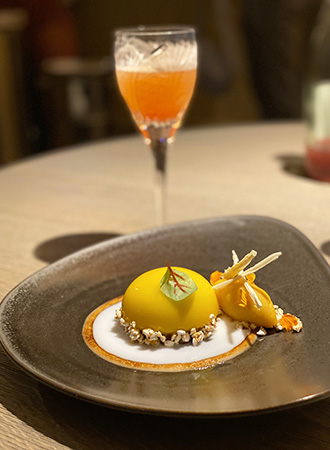
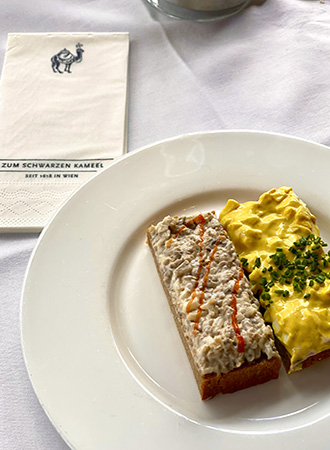
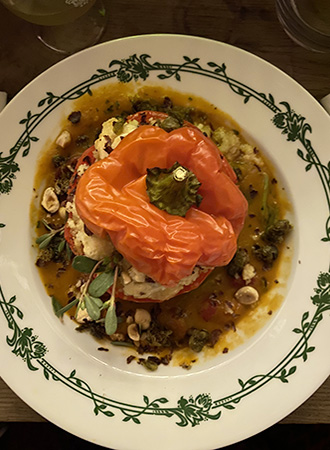
What are you waiting for to put Vienna on the top of your list? Go. Vienna waits for you.
But first, save this piece of information that might be of interest:
*Traveling to Vienna might not be cheap; costs in general can be comparable to other European capitals;
*Where to stay in Vienna: Hotels and B&B's have styles and prices that fit anyone's budget. Two hotels I strongly recommend are the Altstad Vienna (cozy, cool and artsy, located in the fashionable "Boboville" district) and the Guesthouse Vienna (great, central location in the heart of Vienna - plus: gorgeous view from the upper rooms!);
*Taxis are expensive / Uber a little less (I rather use public transport which is very efficient, and it covers the whole city - trams and subway);
*It's a very safe city;
*When to go to Vienna: Well, the city has a very harsh winter. I would avoid January and February in case you are sensitive to the cold, especially because it rains (it snows sometimes) and it gets very humid. However, for those who don't mind colder temperatures, the city has an interesting scene and it can be very charming during December because of the Xmas vibe. During spring and summertime, though, there's a vibrant atmosphere surrounding the whole city and is just sublime to see the combination of colors between sky, trees and architecture. Bonus: when it's sunny and warm, Viennese people love sunbathing and going for a swim in the Danube.





